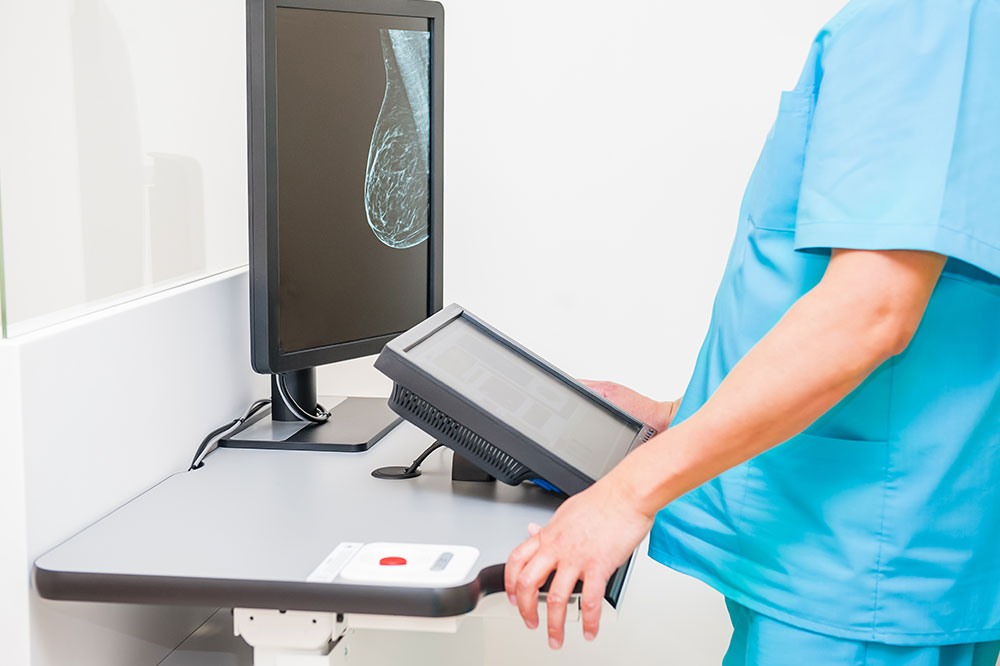Types of tests for early cancer detection
Early cancer detection tests are typically conducted on patients who have symptoms. These tests help in the timely treatment, increasing the chance of survival. Early cancer detection tests reduce an individual’s pain as well as treatment expenses. The American Cancer Society has a list of guidelines for cancer screening. Doctors, together with patients, should understand the guidelines. Below are some early cancer detection tests that doctors recommend.
Imaging (radiology) tests
Imaging tests help doctors see the insides of a particular part of the body.

CT Scan
Computed tomography scans, CAT scans, or CT Scans are painless procedures. It helps doctors see a cross-section view of bones, organs, and soft tissues. Pencil-thin beams of radiation capture images from various angles that the computer uses to create black and white pictures. It is a step ahead of standard X-rays. It pinpoints the exact size, location, and shape of cancerous tumors. CT Scan is also used by doctors for certain types of cancer treatments like radiofrequency ablation (RFA), a procedure that uses heat for tumor destruction.
MRI
Magnetic resonance imaging (MRI) uses magnetic fields to help doctors see cross-section views of internal organs. It also facilitates seeing soft tissues that are hard to catch in imaging tests. MRI is useful for checking the spread and source of cancerous growth. Sometimes a contrast dye called gadolinium is used to speed up tissue response rate and to improve image clarity. In the test, a patient is made to lie on a table that slides inside a long cylindrical tube. The tube holds a strong magnet that releases radiofrequency waves to pick up signals from hydrogen atoms which the computer converts to images.
X-rays and contrast studies
X-rays and other radiographic tests like contrast studies help determine cancer at an early stage. They create shadow-like pictures of bones, organs, and certain tissues. But other tests like CT scans and MRI are often better at producing images. However, X-rays are less expensive, hassle-free, and fast at getting results. Mammograms (breast X-rays) are used to determine breast cancer. Contrast studies are a type of X-ray that uses contrast dyes like barium for clearer pictures of internal organs. For example, in intravenous pyelogram (IVP), a contrast material helps the doctor understand any function or structure abnormalities in the urinary system.
Nuclear medicine scans
Nuclear scans use liquid substances called radionuclides that emit low radiation levels to form images based on the body’s chemistry. Damaged body tissues affected by cancer absorb more or less liquid substances than normal tissues. Specialized cameras trace radionuclide’s travel route and collection points. Based on that, radioactive hot spots are determined. The hot-spot area helps recognize cancerous tumor location. Nuclear scans are not useful in finding minor tumors and providing a detailed report. Other tests are done after this scan to understand more about cancer.
Ultrasound
An ultrasound machine releases high-frequency sound waves that bounce off organs and tissues to create echoes. This is used to create images called a sonogram. This test shows the structure of an organ, its movements in real-time, and blood flow. It facilitates in finding tumors that don’t show clearly on X-ray results. It also helps doctors differentiate between fluid-filled cysts and solid tumors based on echo patterns. Ultrasounds do not use radiation, unlike other tests. They are fast in getting results but have their limits since sound waves cannot pass through air or bones.
Endoscopy
Here, doctors perform a medical procedure using a thin tube attached to a powerful light and camera to look inside a patient’s organs. There are various types of endoscopy that help in finding and treating different forms of cancer. In laser therapy, an endoscope is used to destroy cancer cells using a powerful beam of light. Colonoscopy is performed to determine colorectal cancer and remove any cancerous polyps. Photodynamic therapy uses an endoscope to inject a light-sensitive substance to remove tumors.
Biopsy
A biopsy is typically conducted after a physical examination. Surgery is performed based on ultrasound, fluoroscopy, CT scan, X-ray, or MRI scans to remove a tissue sample for further examination. There are various types of biopsy. For instance, fine needle aspiration biopsy uses a thin, narrow needle attached to a syringe to collect a small amount of tissue from the suspected area.
Cytology
While biopsy examines the entire block of cancerous tissue, cytology examines a single cell type. This scan is also performed to diagnose infection, fetal abnormalities, and a pap smear. Scraping or brushing of tissue surface is done to extract sample cells for examination. Another collection technique is by examining body fluids like urine or respiratory phlegm. Sometimes doctors also perform fine-needle aspiration by removing cells.